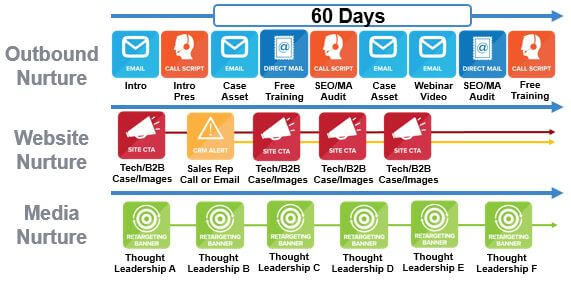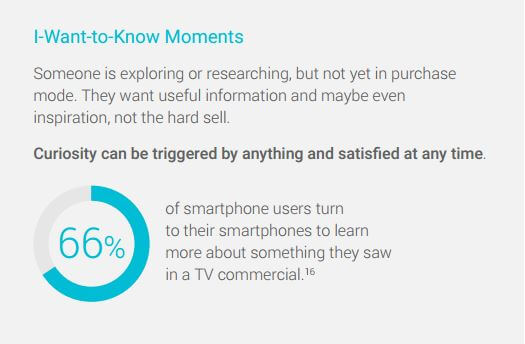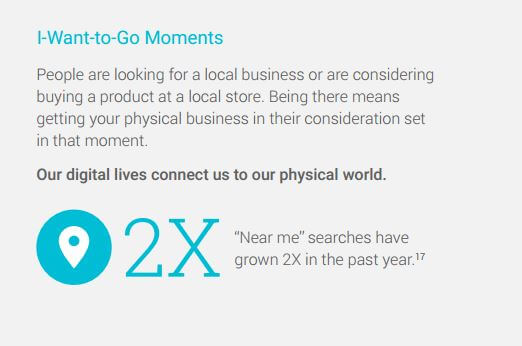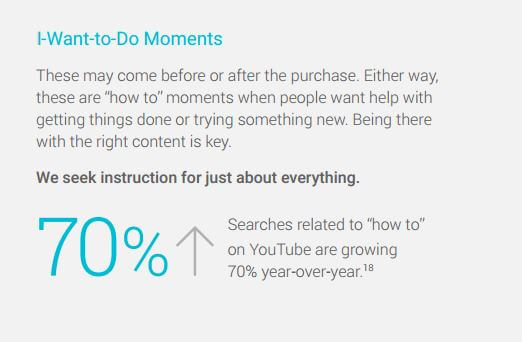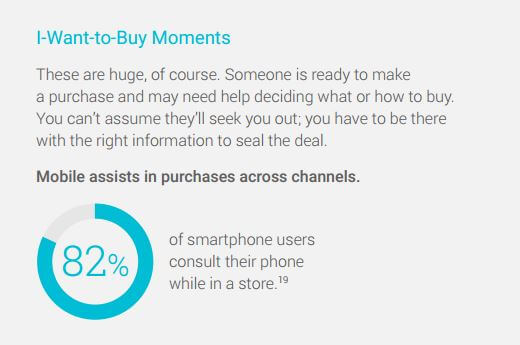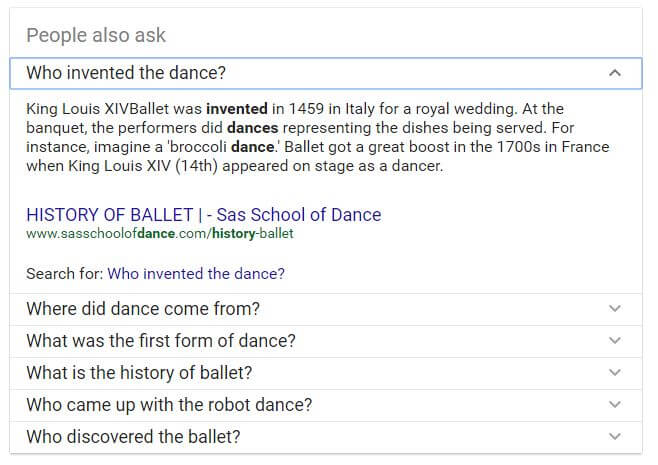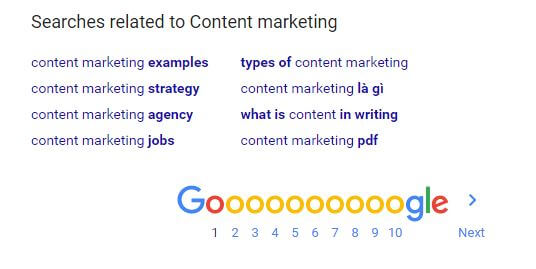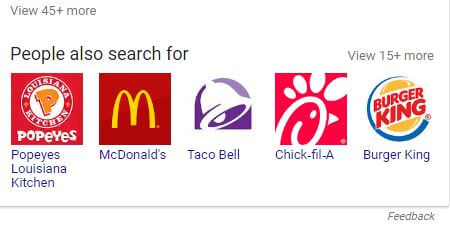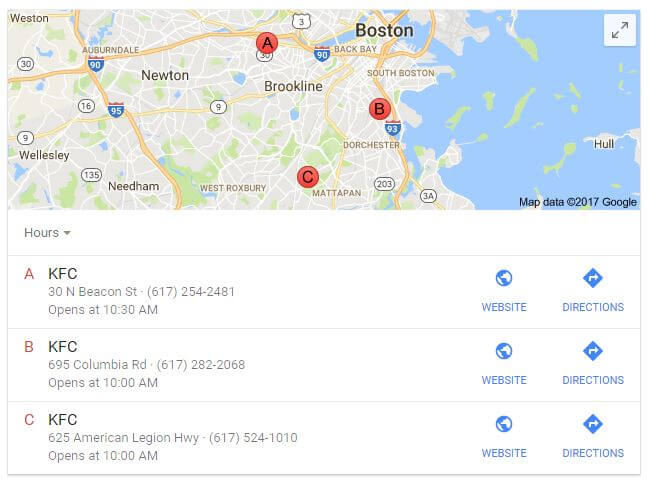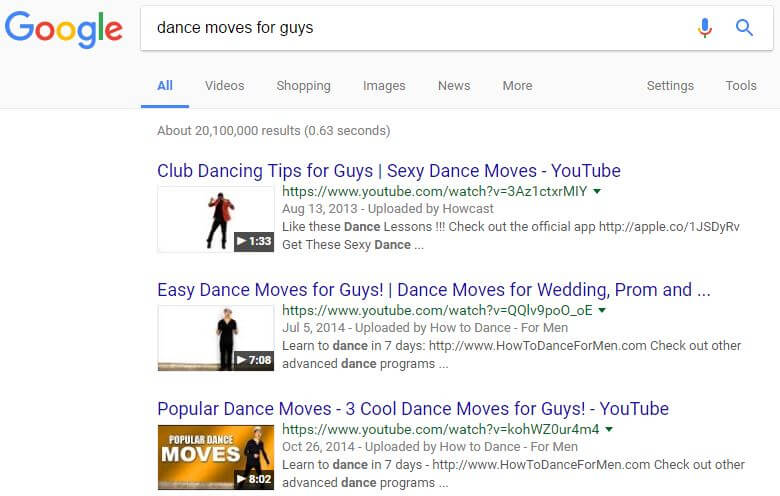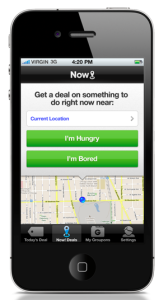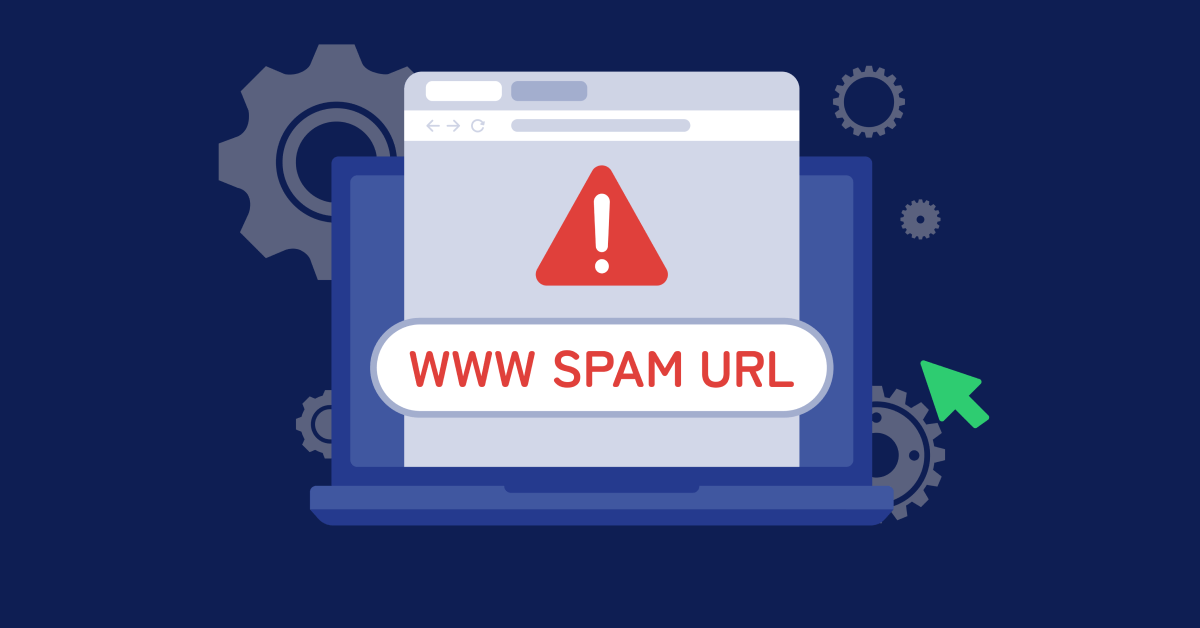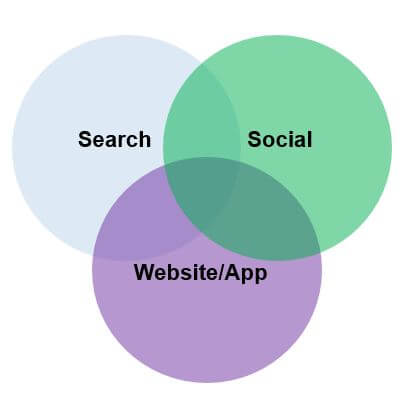
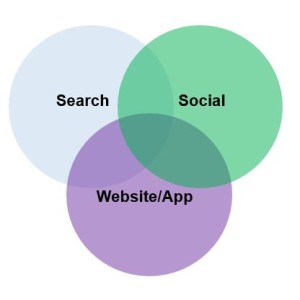
Brand Embrace Embodies Findability
Overdrive Interactive developed the concept of the Brand Embrace five years ago which today is known by professionals in the digital marketing industry as Findability.
The Brand Embrace and executing good Findability across search, social media, and your online properties ensure that your business is present at critical touch-points throughout the discovery and decision-making process of the buyer.
Findability also serves in extending the lifetime value of your customer throughout your relationship.
Findability refers to a brand’s online presence and performance in search, social media, and website/apps.
Websites and apps should have great information architecture, user experience, breadth, and depth of usable and reliably found information.
“A well-executed Brand Embrace strategy turns prospects into customers, customers into brand loyalists, and loyalists into advocates.”
Ensuring your findability is better than your competition’s is the difference between success and failure online!
Great findability: key to conversion when a user is in the moment
Your potential customer does a Google search for a product, clicks on a paid search ad, and then cannot find that product. Result? They bounce and go somewhere else within a matter of seconds.
When your mobile shopper (already hampered by a small screen) can’t easily search, navigate, and discover what they are looking for on a retailer’s mobile site or app, they’ll leave…immediately.
Matching users’ expectations of landing on the page that meets their needs and functions accordingly needs to happen correctly and fast. The battle is won and lost on the landing page.
“Only 9% of users will stay on a mobile site or app if it doesn’t satisfy their needs (for example, to find information or navigate quickly). In fact, 66% of consumers will take actions that have some negative impact on the brand” Google
Topical content for the buyer journey
Buyers don’t become customers immediately in most cases. Especially in the Tech B2B space.
Do you have a large enough pool of assets that appeal to both the research phase and the longer-term needs of your prospects and customers?
Findability should be part of your nurture campaign structure and strategy in email, paid search, re-marketing/re-targeting, website assets, and social propriety posts.
How easy is it for a user to navigate and discover content on your site?
Creative should be budgeted to build a range of assets matching the right content to the right moment. This includes both the short-term “I-want-to-buy” moments, but also more long-term, relationship-building “I-want-to-know” moments.
Four key moment types representing a full range of user needs
I-Want-to-Know Moments
I-Want-to-Go Moments
I-Want-to-Do Moments
I-Want-to-Buy Moments
Findability vs. Searchability
How much of the Search Engine Results Page (SERPs) real estate do you command and own from paid, organic search listings, news, video, the knowledge graph, and your social media properties that are popping up in the SERPs?
Owning and dominating all communication platforms in order to appeal to potential clients and current clients is all but mandatory in today’s marketing and brand management environment.
Presence management by marketing departments and agencies alike seeks to identify data amplifiers in search engine optimization (SEO); landing page design and development; paid media campaign management and execution.
Successful Business Web Presence
Google calls this moment of discovery the intersection of “targeting and timing” and lays out the buyer’s journey as follows:
1) Be There: Being There in Micro-Moments, Especially on Mobile
2) Be Useful: How to Beat Consumer Tune-Out with Useful Content
3) Be Quick: Speed is Key: Optimize Your Mobile Experience
4) Connect the Dots: Measuring Your Micro-Moment Strategy
Finding what you are looking for on a site should be easily navigated either by the site architecture or by search functionality on the site.
SEO Findability
The organic marketing channel
Driving more of the right traffic to your website through organic search engine results is one of your primary goals. Matching those user micro-moments with the proper content and a straight line to conversion is much harder than just building out great content.
Research by UK-based Bunnyfoot showed 81 out of 100 customers clicked on AdWords over the organic listings in Google. Blended search results deliver Images, Videos, Carousel, Places, Local 3-pack, and Quick Answers.
Overdrive likes the Google Quick Answers box and considers that placement position zero.
A combination of Rank Brain and Hummingbird is driving a considerable amount of search presence in the organic marketing spectrum. how does structured markup drive SEO from Strings to Things
The Semantic Web
The relationships and connectivity between those online resources are semantically understood by search engines and influenced by how you structure your meta and schema data.
There are three different structured data markup specifications currently recognized by the major search engines:
| Format | Description and Placement | Supported Data Types |
|---|---|---|
| JSON-LD
(Recommended) |
JavaScript notation is separate from the body of the HTML itself. Markup is placed inside a script tag in the head of the HTML page. The markup does not have to be interleaved with the user-visible text, which makes nested data items easier to express, such as the Country of a PostalAddress of a MusicVenue of an Event. Also, Google can read JSON-LD data when it is dynamically injected into the page’s contents, such as by JavaScript code or embedded widgets in your content management system. | All public data types except for Breadcrumbs. |
| Microdata | An open-community HTML specification is used to nest structured data within HTML content. Like RDFa, it uses HTML tag attributes to name the properties you want to expose as structured data. | All data types |
| RDFa | An HTML5 extension that supports linked data by introducing HTML tag attributes that correspond to the user-visible content you want to describe for search engines. | All data types |
- Once your content is marked up, test it using the structured data testing tool.
Structured data markup consists of three primary elements:
- itemscope – which specifies that the HTML contained in the <div> block is about a particular item,
- itemtype – which indicates exactly what kind of item it is, and
- itemprop – which is the specific property, such as name, URL, review, etc.
“Structured data markup is most easily represented in JSON-LD format, which stands for JavaScript Object Notation for Linked Data.” https://developers.google.com/search/docs/guides/intro-structured-data
Structured sections by type of content
Parsing site structure in breadcrumbs
Extending visibility of your content via relationship structures
User access to subject relationships (disambiguation)
Exploratory behavior, leading people to your subject focus (be specific about your subjects)
Geographic referencing (mark up your location)
Exposing descriptions and not just snippets
Multi-lingual, automatically (so if you already have multi-lingual content, support subject markup too)
Think of Switzerland and the four national languages German, French, Italian and Romansh. Think and operate not only at the geographic level but language markup as well.
Paid Search Placement
Search engine marketing (SEM)
Paid Search and targeted online advertising done well, position your brand as a provider of solutions. Communication of benefits and offers, coupled with strong calls to action, drives users to your sites generating revenue to offset your investment from paid search findability.
Paid search combined with organic search and your social presence creates your overall opportunity cost as it directly relates to the ROI of search and your presence management.
Promoting your websites through paid advertising
As customer acquisition strategies go, applying dollars to paid search is a bit easier for speed to market and realizing ROI. Enhanced findability through paid initiatives can result in minimizing the high opportunity cost of a missed sales. Paid search works well for high intent buyers as it directly answers their needs at the moment.
Paid search engine portal to findability
There is no other more effective way of increasing the number of impressions for your brand than paying for them.
Keyword coverage: Your brand, products, services should be in your keyword lists. We find that covering the head and torso terms with a combination of match types typically covers most of the search intent bases.
Ad copy: Baking in benefits, offers and super calls to actions maximizes CTR as the first part of the buyer journey
Landing pages: Match intent with user response and improving conversion rates through testing.
Findability vs. Discoverability
Every page is your home page. Use IA- and UI-focused user research to determine if low findability and discoverability are caused by site information architecture or navigation design.
Findability: Users can easily find content or functionality that they assume is present in a website.
Discoverability: Users encounter new content or functionality that they were not aware of previously.
Building your Social Fortress
It is important to establish a strong presence on social media. Businesses and brands should take full advantage of the many opportunities to be found on most, if not all, of the major social media channels.
While being active on Facebook, LinkedIn, Twitter and the like helps you get the word out about your products and services, it also goes a long way toward helping your content rank organically in search results.
Expand your reach and communicate with your target audience
If you haven’t already, create your own accounts immediately, especially on the channels where your audience is active.
Start with the biggest and most popular channels first, but if your customers and prospects are using one of the more obscure social media channels, you want to set up an outpost there, too.
Facebook is not an option. Neither is Twitter and LinkedIn. On these three big channels, make sure to set up your accounts thoroughly, including links back to your website and company descriptions laden with core target keywords.
Take the steps necessary to fully optimize each of these channels for not just search, but branding, advertising, marketing, and sales. Include UTM (Urchin Tracking Module) codes with tracking parameters for source, medium, and campaign name in every link you use across social media in order to track, measure, and optimize your efforts for best results.
Effective social branding
On all your social media channels, use header and profile photos that are unique to your organization and brand consistent. Apply to have your pages verified, if that option is available. Share content on a regular basis (a half-dozen or more times a day on Twitter, once or twice a day on both Facebook and LinkedIn), much of your own but some of it third-party curated content that is relevant to your audience.
Consider having a Google+ channel, if for no other reason than the search benefits. Profiles, pages, and posts there has a good chance of being indexed and ranked by Google’s search engine, especially those that are popular.
Instagram, which is owned by Facebook, is a good place to publish visual content if your audience is active there. The same goes for Pinterest. On both of these channels, posting once a day is sufficient, although it certainly is okay to post several or more times a day, depending on the quality and relevance of the content you have to share.
YouTube, the second largest search engine in the world, should be a part of your social media fortress. Include links in your company description for your own website as well as your other social media profile and use the full amount of available characters (1,000). As for your videos, you should also take advantage of the maximum length of characters allowed in the description fields and add a number of relevant tags. Don’t forget to link your YourTube channel to your Google + account, too, and try to get a verification badge as well.
Finally, there’s SlideShare. Owned by LinkedIn, this channel is a great place to get more mileage out of your presentations. Use core target keywords in your titles and include links back to your website somewhere within the presentations themselves.
Creating a social fortress around your website establishes trust
Like you do elsewhere on social media, you want to grow a loyal audience of subscribers here and cross-share your published content to Facebook, Twitter, and other channels. Facebook now influences 52% of consumers’ online and offline purchases, up from 36% in 2014 (AdAge)
Paid Social
Don’t forget, when organic social isn’t providing enough traction to add paid social for campaign support. Paid social posts (done right) make sure you’re reaching the correct people with your content. Paid social promotion should be part of all your social campaign strategies.
Optimizing your Search Presence
Findability of a Website
SEO isn’t a step in the process, it’s part of EACH STEP in the process.
RELEVANT CONTENT
- As long as you are delivering relevant content and well-organized code:
- Chances of establishing and maintaining a significant presence in the search engines dramatically improve
- Avoid tricks that can be viewed as negative
- Cloaking, redirects, machine-generated content
Keywords are still the primary engine of the SEO process since it’s how users find your pages. And the ranking of your pages on those keywords is an important metric for correlating the performance of the page.
Rank still matters (and it always will). page-based SEO does not mean the end of rank data. Rank data is essential for measuring the success of SEO activities. In 2014, tracking rank has become a multidimensional task, as rankings (and user intent) often differ by device type (mobile, tablet, or desktop), location (city and country), and placement in Universal results
Creating well-developed Meta and Title Tags remain a central component of any integrated search engine content strategy
- A method for your website to communicate with the search engines
- Increase SEO presence and effectiveness of pages on ABC.com
- Powerful online marketing elements – serving to associate your website and brand with valuable keywords for the search engines
- Enhance the presence of the ABC brand within organic search listings
- SEO compliant Meta and Title Tags help to boost the click-through rate of your natural search listings while supporting online branding initiatives
- Improve marketing effectiveness of the site, by developing meta and title tags that compel the user to click through to the site
We’ve gone beyond thinking of the website as the be-all, end-all to our online presence. The entire digital presence for your website means sites in several languages, as well as numerous social sites, each of which has unique pages, feeds, communities, push notifications, and other behaviors that appeal to their audiences in different ways.
Our own materials can often rank better on one of the social sites than it does on a search engine, and the social sites themselves can rank ahead of our website in those search engines.
It’s like basketball, where if you get the rebounds, yours and the other team’s, you’ll win. Well, if our own site doesn’t show for a certain piece of shared content, but a LinkedIn post does, we’ve got the rebound.
Local Search
Where to claim your business listings
• Apple maps connect
• Bing places for business
• Facebook for business
• Factual
• Foursquare for business
• Google my business
• HotFrog
• Infogroup
• Insiderpages
• Neustar localeze
• Superpages
• Yelp for business
• YP
Local search engine advertising
Google local snack pack other search engines like Apple (local iBeacons), Yelp (local search ads) and Facebook (location-based retail ads) are all paid and organic options for being found. Local search optimization is key to your web presence and leads management for the mobile user.
Findability on an App
When Groupon was building their app, their marcomm team had whittled the list of what they offer down to 13 different categories.
They were ready to go into development, when they asked the critical question, “How can we make this better?”
The team then reduced the app experience to down to two buttons, “I’m bored” or “I’m hungry,” which brilliantly covers everything Groupon offers and represents.
In this case, findability in the app is key to conversion and an excellent user experience.
The Science of Findability
by @nholt
93% of online experiences begin with a search engine
Since no two people are the same in their behavior, you need the user experience (and purpose) of your website to satisfy ALL people using a variety of methods, e.g., satisfy the searchers’ experience.
You need to optimize for lazy searchers. If they cannot find an answer to their initial Google search, they will perform a more specific (a.k.a. “long tail”) search that will hopefully satisfy their reason for using Google. The same logic is relevant to page two of Google:”75% of users never scroll past the first page of search results.”
SERP Position Google CTR
1 18.20%
2 10%
3 7.20%
4 4.80%
5 3.10%
6 2.80%
7 1.90%
8 1.70%
9 1.50%
10 1.0%
Dynamic Content
One great method is dynamic content that customizes your website content based on personas’, or a persona’s, previous behavior browsing your website (or the entire web?)).
Data-driven decision making
Testing
Constant iteration is crucial…..science vs art..
Competitive Research – what worked/what didn’t work.
Analyze your competitors to determine the flow of their online (and offline) presence…Don’t reinvent the wheel. If you want to be different from your competitors, look at other websites you idolize and make a “wish-list” of actions you can apply to your own website.
https://moz.com/blog/a-tale-of-two-studies-google-vs-bing-clickthrough-rate
How to Measure Findability
There are free Google products — Google Webmaster Tools, Google Analytics, GoogleMyBusiness, Google AdWords, YouTube, Google+, and Google Tag Manager — that provide a solid foundation for looking at user behavior on your website and online properties.
Analytics to measure findability
A site search or chat support box on your website is a great opportunity to analyze the findability of people browsing your website and is a great opportunity to find gaps in your content. If you are a large organization, ask your customer support and/or sales team for any insights they have received from current and prospective consumers about their site experience.
Measuring micro-moments
The customer experience, CX is measured by the sum of your marketing initiatives as defined by your site and app information architecture, user experience, search marketing, and social presence.
Connect the dots across devices and screens, looking at not just first and last-click attribution and performance (40% still go by first/last click) but the whole consumer path to purchase. “40% of people who research on a smartphone go on to purchase on a desktop” Google/IAB “Our Mobile Planet,” May 2013
Providing a seamless customer experience defines your brand
Performance can be measured by time on site, page-views per session, user sessions — but most importantly finding ways to be useful to the consumer will drive purposeful results.
Tell a single story across devices, channels, and formats
Connecting the dots between user sessions and devices, time of day and the number of screens visible and at use at any juncture (think watching TV for entertainment at night with your laptop cranking out your quarterly report for work) forces the marketer to think elastically.
Marketing elasticity takes into account channel variable’s sensitivity to changes in device variables, locations, etc… As the buyer changes their behavior the journey and resulting story need to adapt.
Driving Digital Transformation in Marketing
Findability needs to be part of your digital transformation strategy as tactically three and more different aspects of your digital marketing efforts/channels need to be in sync. Being found in the search engine results pages is the beginning of the buyer journey. Finding what they are looking for on your site is where the user hopefully converts or ends up leaving frustrated if you fail to deliver.
Off-Site Findability ROI
How much beachfront property do you own on the search results page? Not just for your branded terms but for the categories you care most about? Why cant anyone find your website? Don’t be invisible to the search engines!
Owning the Google Results Page
What’s this thing called the SERP — the search engine results page — stake your claim on this valuable piece of online real estate for your categories as well as the brand. It’s the piece of the internet that every B2B, B2c, and B2B2C company craves, however very few realize. Frankly, your successful land grab is the difference between your online business winning and losing.
Increasing the visibility of your website, paid placements (Text Ads, PLAs’), other assets (News, Videos, Images), and your social platform profiles in a search engine’s results are what findability is all about when it comes to SERPs.
On-Site Findability ROI
The primary means of a user getting to where they need or want to be on your site is via your site search ( Up to 30 percent use site search and buyers are 90 percent more likely to use search compared to those merely browsing), site navigation as it pertains to related links and products, landing pages that match the user intent based on their searches ( 74 percent of consumers get bounce when content, offers, ads, or promotions have nothing to do with their interests) and the cross-device user experience( About 90% of consumers “cross devices in pursuit of a single goal and 98% move between devices in the same day,”).
Conclusion
Findability is both qualitative and quantitative. We have discussed the importance of building a strong online presence, the need for both organic and paid in search and social. We have shown how UX and UI both play a part in making for a good user experience.
Unit tests pass, no integration tests
We have also discussed Findability as it relates to measurement and the need for tracking in order to manage and optimize your online findability.
Now let’s talk about three questions you should ask whenever you create a piece of content that can be used in programs and shared across social sites.
One, what target keywords should infuse your content so it can be readily summarized and shared?
Two, if you have access to the data, or have recent feedback from other posts, what do you see working, in terms of inbound activity, engagement, connections, clicks, and conversions?
Third, nothing happens in a vacuum, so what other posts or programs on the same topic can be piggybacked or boosted with the post you have in mind?
Social posts should be treated like any program, with clear goals, best practices, and feedback.
Ultimately, your awesome content does nothing unless people can find it. Social (organic social, promoted social) and Search (paid search, organic search) are key Findability elements and ways to make that information visible to the user.
To learn more about your findability quotient as it relates to your brand, ping us and we are happy to take a look under the hood for you.




